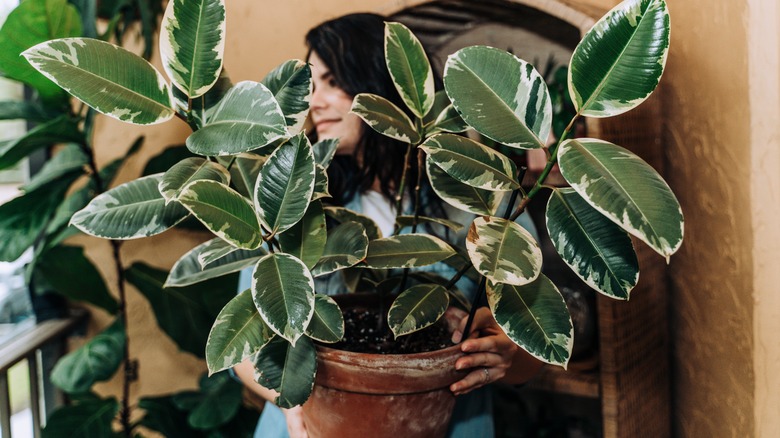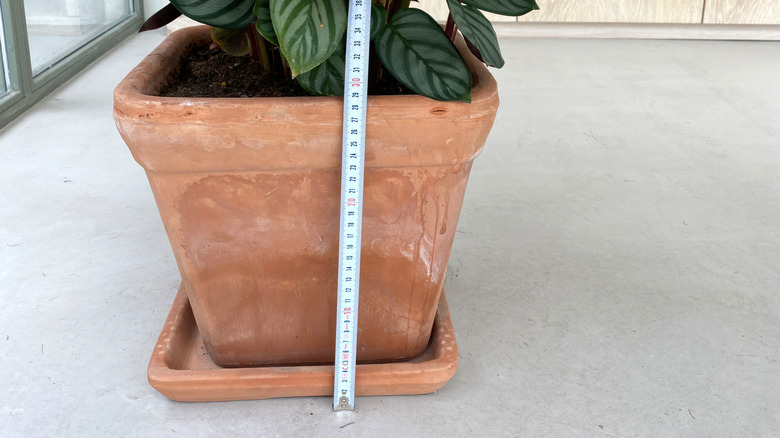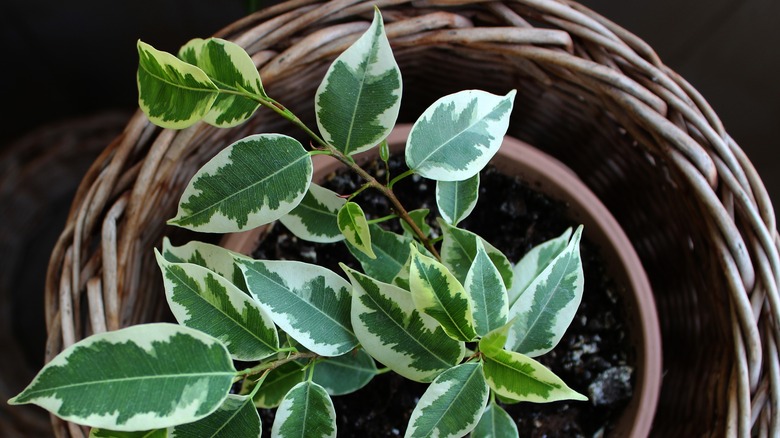Essential Tips For Choosing The Perfect Pot For An Indoor Fig Tree
Gardeners living in USDA Hardiness Zones 8 to 10 can grow figs of all varieties outdoors. Lucky! The rest of us ficus family lovers (i.e., those in Zones 7 or below) have to grow figs in pots. Not to worry, though. If you get the conditions right, both fruiting and ornamental fig trees will thrive in a container inside a home. That's right, you could be harvesting your very own figs from your sunroom! Or, if you prefer, simply enjoying the drama a non-edible ficus brings to a room. So long as the planter you choose meets a few exacting fig standards: it needs to be at least 5 gallons in size (or give the plant's roots 1 to 2 inches of free space), provide excellent drainage, be easily moveable (especially if you take the plant outside for the summer), and work with your interior decor.
The first and arguably most important consideration for ficus plants that will bring nature into your home is pot size. Eventually, most figs grow to fit a 15 or 20 gallon container. Until then, you'll need a planter that's bigger than the one your fig is in right now, but not too much bigger, or you risk the plant going into shock after it's transplanted or the soil holding too much water. Plus, while most ficus like having slightly cramped roots, going too small will mean you have to prune the roots more often, and the plant's overall health may suffer.
Consider the size of your indoor fig pot first
Measure around 7 inches from the outside edge of your fig's current pot to estimate the new container's size. Alternatively, dig down into the soil until you hit roots, make an educated guess at the root ball dimensions, then add 1 to 2 inches. New pot size found! Consider, too, how much potting mix the planter can hold. The more soil in the pot, the less frequently you need to water. In fact, though a good watering is a key in how to grow and take care of ficus plants, they don't like having wet feet all the time. To avoid root rot, choose pots with lots of drainage holes in the bottom. Pots with saucers are okay, so long as you remember to tip out the water that pools in them after every watering.
If you really love the look of a specific container but it doesn't have holes, don't give up on it right away. Check, instead, whether it's made from a material you can drill holes into. On that note, ficus do well in pretty planters made of pretty much anything, so long as you meet the drainage requirements. However, each material has distinct benefits. Plastic pots are lightweight (especially with a big plant and lots of soil) and hold water well, but are prone to cracking. Clay or concrete are more breathable, reducing the chance of root rot, but are far heavier.
Container design matters when you bring fig trees indoors
Of everything you should know before planting — or re-planting — an indoor (edible) fig, it's that they're often moved outdoors during the warmer summer months. You will, of course, also have to move it back indoors for the winter. As the fig grows, the tree and the soil-holding container it lives in grows heavy. If you're moving your ficus seasonally, choose planters with built-in handles or a plant stand fitted with wheels.
Shape matters more than you think when it comes to choosing a pot for a fig living inside. Even the smaller varieties — like, say, Ficus lyrata 'Bambino' or the perfect-for-apartments Ficus audrey — are on the larger side for a houseplant. Then there are giants like the currently trending Ficus umbellata with, as its name implies, its robust, umbrella-like leaves. They need a stable container that won't tip over, which means choosing one with a wide base and a slight taper at the mouth.
Visual balance is also important — many consider houseplants decorative features, albeit of the living variety. Design expert guidelines state creeping greenery should take up two-thirds of the total plant size, and tall plants, like most ficus varieties, should have pots about a third of their size. You can also keep your ficus plant in its lightweight plastic pot and pop the entire thing inside something more aesthetically pleasing, like a wicker basket or neutral-hued ceramic vase that puts the dramatic lines of your fig front and center.


